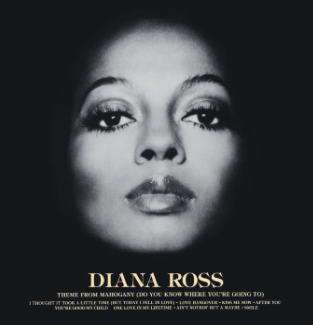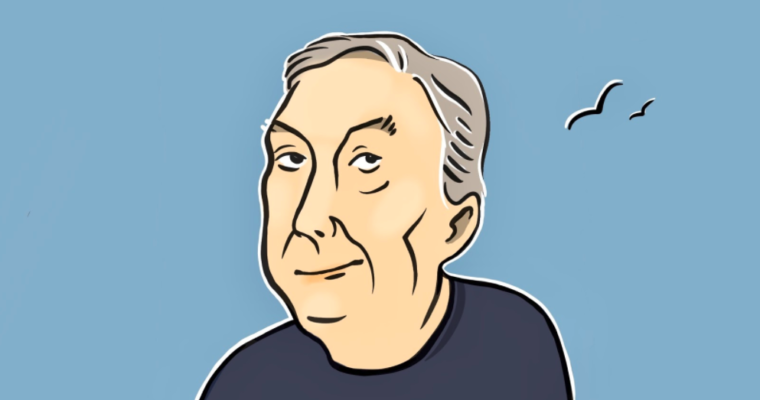Rob Johnson, President of the Institute for New Economic Thinking, is not your average economist. He’s got heart and soul, or if you’ll have it, the blues! With his deep connection to the arts and humanities, Rob leads the new economic thinking not just with a sharp mind, but also with sensibility.
This article is part of an ongoing series in which Rob shares his life experiences, and biggest lessons learned. If you’re an aspiring expert in economics or a related field, this is for you. It might mitigate the depth and duration of your mid-life crisis. Earlier articles in this series can be found here.
Today, we hear about Rob’s time in graduate school, and how he started his career in the U.S. Senate.
3 – FROM NEARLY DROPPING OUT TO FISHING WITH THE CHAIRMAN OF THE FED
“As a graduate student at Princeton, I worked with some very good and interesting people, including Joe Stiglitz and Alan Blinder. But still, I almost dropped out. I just didn’t see the point of all the formalism, game theory, set theory, etc. It wasn’t that it was too difficult; I was well trained in using math from my sailing and MIT days. But I felt that I was burning away my time on this planet doing this ritual in modeling technique. A lot of it was rigid formalism that was not insightful.
But then Axel Leijonhufvud was visiting Princeton’s Institute for Advanced Studies, led by Albert Hirschman and with Marcello De Cecco. Their environment and approach opened my eyes. Axel was a big influence. He started having me come to their seminars and introduced me to people in the history department. David Abraham, who was a friend of Tom Ferguson, Arno Meyer, who wrote all about the transition from the Bolshevik revolution; and Carl Schorske–they brought the material to life for me. Axel actually told me I’m lucky that I can do the math. I could get through, he said, and then really use my time to go through channels of political economy, history, and institutional economics. They bred me as a dissident, and kept me going. I could again see how to approach understanding the calamity in Detroit.
Towards the end of my time there, I was thinking about what direction my career would take. I knew this Professor, Peter Kenen, who had tremendous international finance knowledge, which made me want to go fishing with him every Saturday. And one day, Kenen said “I’m gonna bring this guy along next time; he’s the Chairman of the Fed. So before I knew it, Paul Volcker and Peter Kenen and I stood together on a boat throwing our rods, and I listened to the two of them talk. At one point, Paul said to me “You don’t sound like someone who just wants to be an academic. Why don’t you apply for a dissertation fellowship and come to the Federal Reserve and you can work with Ken Rogoff and Dale Henderson there.” Well, I did that, but I ended up working with a wonderful mentor named Peter Isard.
It let me write my dissertation while maintaining a connection to practitioners and the “real world.” Paul and I talked about that; he agreed that in order to be a meaningful economist, you have to choose which problems to focus on. The best way to do that is through what I now call “inductive inspiration”; by being around real events. That’s how you ask the better questions. Albert Hirschman always stressed this, too; he would also go out into the field periodically to get inspiration on what would be important to work on.
Then, during my life at the Fed, as I was finishing my dissertation, I got in a serious relationship with a woman there and we wanted to get married. Her name was Bonnie Loopesko, and she was the head of Japan Analysis, which was a big job in the 1980s. And so Paul Volcker called me to his office and told me that he needed her to stay, and that it would be a bad idea for me to work in the same place as my wife. He asked if he could help me, and that he could talk to some people. Then the next day he said “Senator Pete Domenici – Republican senator from New Mexico – would like to meet with you.”
So I ended up at the U.S. Senate, working for Republican Chairman Pete Domenici on the Senate Budget Committee, with a brilliant team led by Bill Hoagland and Gail Fosler, and always consulting with former chief of staff Steve Bell. I learned about hearings, speechwriting, and how legislation on economic issues was made. Domenici told me that I should listen to him on the Senate floor, write speeches with my economic ideas in his voice, and then brief him on who in the Senate would be an ally and who would not. Afterwards, we would experience the reaction to see what we learned, and formulate a strategy for hearings and legislative action. It was like a postdoc in political economy.
During this time I also met the brilliant journalist and writer William Greider, who wrote “The Education of David Stockman.” At the time, he was writing a book on the Federal Reserve, and reached out to me to ask about Central Banking. I told Volcker about it, and he told me to go ahead, and that he would be interviewed, too. So I told Greider that I would not gossip about people or meetings inside the Fed, but that I’d be happy to discuss monetary and macro theory with him, and critique his drafts. Greider agreed, shared many of his ideas with me, and introduced me to a fabulous network of people in Washington D.C. Later on, Steve Bell from the Domenici staff went to work with David Stockham, which led me to connect with him as well. He, too, was a valuable advisor.
After the Senate changed to Democratic control in November of 1986, I moved over to be the Chief Economist of the US Senate Banking Committee under Democratic Chairman William Proxmire. That was interesting because it was the time of the savings and loan bailout and the 1987 stock market crash. My Kindleberger background came in useful. Traders had been doing what they call arbitrage, by creating a kind of dynamic option. Portfolio insurance was what they named it. But that didn’t work out in the midst of a crisis; the quant methods they were using were not realistic in the marketplace.
After that happened, I ran the Senate side Humphrey Hawkins hearings, which is where the Federal Reserve reports on their mission to the U.S. Congress. I met many great journalists that way, including Paul Blustein, Alan Murray, Tom Ricks, Martin Wolf, Anatole Kaletsky and Lionel Barber. And I was also reaching out to people behind the scenes, like Warren Buffett and George Soros, who Dave Smick and Richard Medley introduced me to.
Soros had lost 120 million dollars in that crash, which I was told was nearly a third of his net worth at the time. I wanted him to be a witness, but he didn’t want to appear himself. But he was very happy to give me guidance so that I could run hearings focused on the crux of the problem. I got to know him quite well, and later worked on his 500-day plan for how Russia should transform its structure of governance. Naturally, Soros asked me to envision how a parliament should interact with a Central Bank.

Enjoy sound with the story!
Theme From Mahogany – Diana Ross
Goin’ Down – Jeff Beck

Reading List
William Greider – Secrets of the Temple
William Greider – The Economic Education of David Stockman
Subscribe to receive the next article directly to your inbox! And in the mean time, take a look at Rob’s podcast Economics and Beyond, available wherever you get your podcasts.
